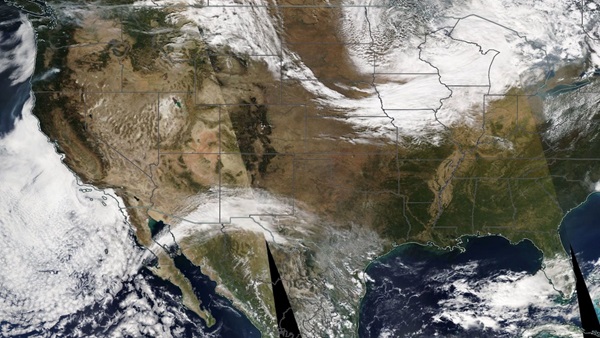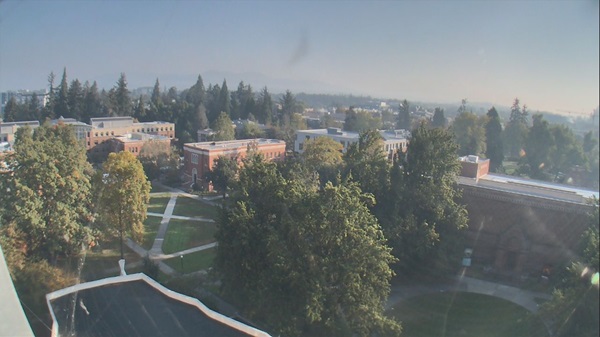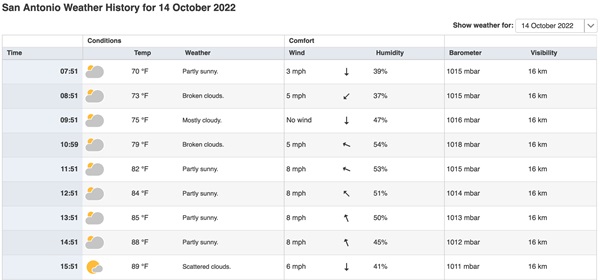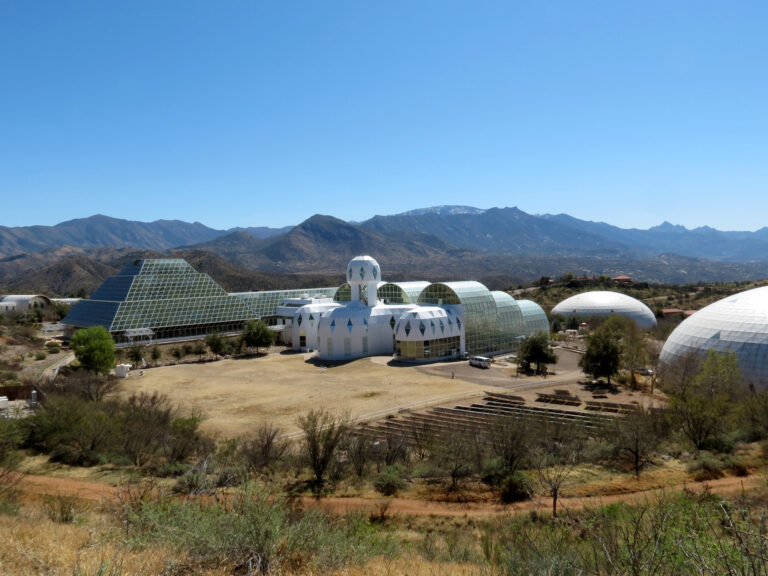Key Takeaways:
We are now less than a year away from the highly anticipated annular eclipse that will cross the United States on Oct. 14, 2023. And if this year’s weather was any indication, we might be treated to quite the show next year.
A solar eclipse occurs when the Moon resides directly between the Sun and Earth. During a total solar eclipse, the Moon entirely blots out the Sun. But during an annular eclipse, the Moon is too far from Earth — and therefore too small — to completely cover the Sun. This size discrepancy transforms our star into a Tolkienesque ring of fire.
On Oct. 14, 2023, the path of the annular eclipse will sweep through Oregon, Nevada, Utah, New Mexico, and Texas. Along the way, it will also clip the corners of California, Idaho, Arizona, and Colorado. After leaving the U.S., the eclipse path will continue through Mexico, Central America, Colombia, and Brazil.
Weather for the 2023 annular eclipse
We know that the 2023 annular eclipse will happen. But will the weather cooperate? That’s not a question we can answer with full confidence.
For fun, however, we asked: What would have happened if the 2023 annular eclipse occurred on Oct. 14, 2022, instead?
Looking at snapshots of the weather on a given day will not tell you exactly what the weather will be like on the same day the following year. But such snapshots can give you hints about what might happen on eclipse day itself.
The cloud tool on eclipse maps at timeanddate.com indicates the likelihood of cloud cover on Oct. 14. It is based on satellite data spanning a 20-year period. In the image below, the orange lines show the path of annularity for the Oct. 14, 2023, annular eclipse. The darker gray areas correspond to regions with an increased chance of cloud cover
Fortunately, we can see above that long-term weather trends suggest the path of the 2023 annular eclipse will be relatively free of burdensome cloud cover.
Satellite images taken Oct. 14, 2021 (see below) indicate that the historical cloud pattern — that is, sparse cloud cover — generally held last year for the region near the 2023 annular eclipse path.
And this year, things looked even better. As you can see below, satellite images taken Oct. 14, 2022, reveal lower-than-average cloud cover for most regions along the 2023 annular eclipse path.
Next, we’ll dive a bit deeper into the recent weather conditions for several cities that lie along the path of annularity for the Oct. 14, 2023, eclipse.
Eugene, Oregon
Annularity starts: 09:16 A.M. PDT
Average cloud cover: 65%
Located some 50 miles (80 km) from the Pacific coast, Eugene is the first major city on the path of annularity. We’ve been keeping in touch with Scott Fisher, an Astronomy Lecturer and Outreach Coordinator at the University of Oregon, which has its main campus in Eugene.
Last year, Fisher reported overcast skies in Eugene on Oct. 14, 2021. “The weather turned poor yesterday,” he said. “This is quite typical for Oregon at this time of the year.”
This year’s Oct. 14 weather report was more promising, however. “The sky smiled on us this morning, and the weather in Eugene turned out to be clear and warm,” Fisher said. “There was a fairly thin — but noticeable — layer of forest-fire smoke in the air, but that would not have prevented a view of the eclipse!”
Richfield, Utah
Annularity starts: 10:26 A.M. MDT
Average cloud cover: 34%
The largest city in Utah with a chance of seeing the ring of fire is Richfield, which hosts a population of 8,000. On Oct. 14, 2021, the city saw passing clouds. This year, however, Richfield was treated to clear skies all week, as you can see below.
Roswell, New Mexico
Annularity starts: 10:38 A.M. MDT
Average cloud cover: 28%
The path of annularity includes four of New Mexico’s five biggest cities: Albuquerque, Rio Rancho, Santa Fe, and Roswell.
In both 2021 and 2022, Albuquerque and neighboring Rio Rancho saw passing clouds on Oct. 14. Santa Fe and Roswell, meanwhile, experienced clear and sunny skies on Oct. 14 the past two years.
That’s promising for us, as Timeanddate.com will be hosting a live broadcast of the eclipse from Roswell on Oct. 14, 2023, in collaboration with the Roswell Astronomy Club.
Junction, Texas
Annularity starts: 11:48 A.M. CDT
Average cloud cover: 53%
This city is aptly named: Junction, Texas, lies on the paths of both the 2023 annular eclipse and the 2024 total eclipse.
Brett Mosley is Director of Texas Tech University’s Outdoor Learning Center at Junction. He knows as well as anyone that — in his words — “weather happens.” In 2021, Mosley reported Oct. 14 started with total cloud cover, “but by noon, it had all cleared out, with some remnant altocumulus clouds floating around.”
Similarly, on Oct. 14, 2022, Mosley said: “I was on a kayak trip this morning and it was total cloud cover the whole trip. I arrived back at our campus around 10:30 [A.M.] and the clouds were just starting to clear. By 11:48 [A.M.], it was mostly clear. A few clouds here and there — nothing that would have obstructed the Sun for any meaningful time.”
San Antonio, Texas
Annularity starts: 11:52 A.M. CDT
Average cloud cover: 61%
With a population of about 1.5 million, San Antonio is the largest city on the path of annularity. It lies about 130 miles (210 km) from the Gulf of Mexico.
On Oct 14, 2021, the city saw a mixture of scattered and passing clouds around the time of annularity. But Oct. 14, 2022, was partly sunny, which means that between 30 percent and 70 percent of the sky was covered by clouds.
The following chart shows how San Antonio’s weather developed over the course of the day. With any luck, next year will see even clearer skies, unlocking the ring of fire for more than a million people.
What weather to expect for the 2023 annular eclipse
Although clear skies for the 2023 annular eclipse are far from guaranteed, the weather prospects in the U.S. for the October 2023 are encouraging — particularly in areas away from the coast.
However, the average cloud cover is higher for parts of the eclipse path that lie outside the U.S. The historic cloud cover is around 70 percent in Mexico, and it climbs as high as 90 percent in Central America and Colombia. The average cloud cover in Brazil is typically between 70 percent and 90 percent, although it drops dramatically to around 30 percent in a dry interior region of the country known as Sertão.
Of course, wherever you are, there is no way to know for sure what the sky will be like on Oct. 14, 2023. After all, weather happens!
Thank you to our friends at timeanddate.com for contributing this article.

















